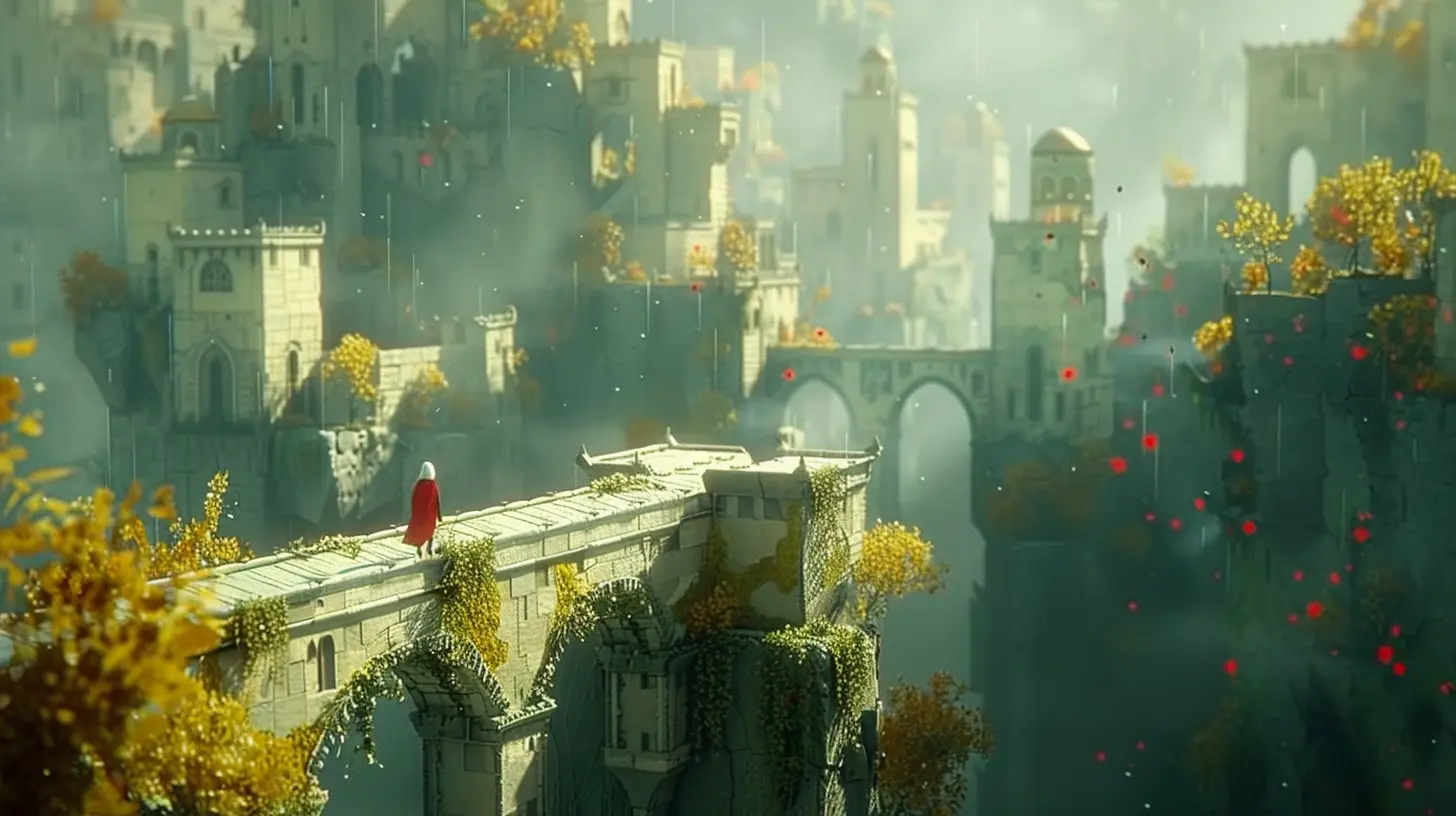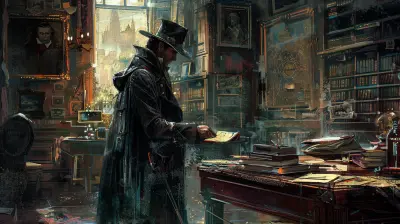The Magic of Minimalism in Puzzle Game Design
21 November 2025
Puzzle games have been around for as long as gaming itself. They’ve evolved from simple pen-and-paper crosswords to complex video game experiences that challenge both our wits and our patience. But while some games bombard us with ultra-realistic graphics, intricate narratives, and a million things happening on-screen, puzzle games often thrive on doing the opposite. At the heart of many great puzzle games is a powerful design philosophy: minimalism.
But what is it about minimalism that makes these games so uniquely satisfying? Let’s dig into why simplicity isn’t just an aesthetic choice in puzzle games—it’s the secret sauce that keeps us coming back for more. 
What Is Minimalism in Puzzle Game Design?
Before we dive headfirst into its magic, let’s break minimalism down. In puzzle game design, minimalism means stripping away the fluff. Think clean visuals, straightforward mechanics, and a focus on the player's interaction with the game. It’s about doing more with less.Imagine walking into a room with just a chair and a single lightbulb hanging from the ceiling. It’s not cluttered, right? Now, translate that sense of clarity into a game. A minimalist puzzle game gives you only what you need—no over-the-top animations, no unnecessary distractions. Just you, the problem, and the tools to solve it.
Why Minimalism and Puzzle Games Go Hand-in-Hand
1. It Amplifies the Core Experience
At their core, puzzle games are about problem-solving. You’re not there for flashy explosions or dramatic cutscenes; you’re there to flex your brain. Minimalism amplifies that experience by removing anything that doesn’t serve the gameplay.Take Tetris, for example. It doesn’t need a backstory or fancy visuals. The gameplay loop—fitting shapes together as they fall at increasing speeds—is so pure and addictive that it’s become a timeless classic. By reducing distractions, minimalism lets you focus on what really matters: the puzzle itself.
2. Accessibility Is King
Let’s be honest—no one wants to spend half an hour figuring out how to play a game. The best puzzle games are easy to pick up but hard to master. Minimalist designs excel at this because they keep things simple. The rules are usually intuitive, and the tutorials (if they exist at all) are brief.Games like Sudoku or Minesweeper require little explanation. You don’t need to comb through a manual; you just dive in. That's the beauty of minimalism—it cuts the learning curve in half.
3. Encourages Creative Problem-Solving
When there are fewer distractions, your brain has more bandwidth to think creatively. Minimalist puzzle games often present players with open-ended challenges that don’t have a single “right” solution.Look at The Witness. It’s a masterclass in minimalism. With no dialogue, no instructions, and no cluttered interface, all you have is a series of puzzles embedded in a beautiful, serene world. The game doesn’t hold your hand, but because it stays so clean and focused, you’re free to experiment and figure things out your way.
4. It Makes You Feel Smart
Have you ever solved a tough puzzle and felt like a genius afterward? Minimalist puzzle games enhance that feeling. With fewer moving parts, every step you take to solve a problem feels like a win. You can’t blame clever lighting or confusing UI for tripping you up—it’s just you and your brain versus the problem.Games like Limbo and Inside use minimalist design to their advantage. The environments are stark, almost haunting, and there’s very little guidance. Every discovery feels monumental because the game trusts you to figure it out.
How Visual Minimalism Elevates Puzzle Games
1. Instantly Recognizable Aesthetics
Minimalist graphics don’t just look clean—they create an identity. Think of games like Monument Valley. Its striking use of pastel colors and geometric shapes isn’t just pretty; it’s purposeful. The simple, uncluttered design makes it easier for players to focus on the puzzles and navigate the environment.Similarly, Thomas Was Alone uses minimalist visuals to tell a surprisingly emotional story. It’s just rectangles on a screen, but the lack of complexity allows the narrative and gameplay to shine.
2. It’s Easier on the Eyes
Gaming for hours can be exhausting, especially when your screen is crammed with HUDs, health meters, and mini-maps. Minimalist puzzle games, with their clean layouts and straightforward visuals, offer a welcome break.Remember 2048? It’s just numbers on a grid. No special effects, no flashy animations. You can play it for hours without feeling overstimulated—proof that simple can be beautiful.
3. Timeless Appeal
Minimalist designs age like fine wine. While realistic graphics can quickly feel outdated as technology improves, minimalist visuals remain evergreen. A game like Tetris from the 80s is just as playable today as it was back then. That’s the staying power of simplicity.
The Role of Sound in Minimalist Puzzle Games
You can’t talk about minimalism without mentioning sound design. In puzzle games, audio plays a huge role in shaping the player's experience. Minimalist games often ditch bombastic scores in favor of subtle, ambient soundtracks.Take Zenge, for instance. It pairs simple, meditative puzzles with a calming soundtrack. The combination of gentle visuals and soothing sounds makes for an experience that’s almost zen-like. You’re solving puzzles, but you’re also relaxing.
On the flip side, some games use silence to heighten focus. A quiet game creates a sense of intimacy, drawing you deeper into the experience.
Challenges of Minimalism in Puzzle Game Design
Of course, it’s not all sunshine and roses. Designing a minimalist game is harder than it looks. Why? Because every element has to count. When you strip things down to the essentials, there’s no room for error.A poorly designed minimalist game risks being boring or confusing. The line between "simple and elegant" and "bare and empty" is thin. Striking the right balance takes skill and a deep understanding of game mechanics.
Why We Crave Minimalist Puzzle Games Today
The modern world is noisy. Our lives are full of notifications, obligations, and constant stimulation. It’s no wonder we’re drawn to games that offer a break from all that chaos.Minimalist puzzle games provide a kind of mental detox. They remind us that less can be more. In a world obsessed with complexity, their simplicity feels refreshing.
And let’s be real—there’s something deeply satisfying about solving a puzzle. It’s like tidying up a cluttered room or hearing a perfectly timed joke. Minimalist puzzle games cut out the noise and let you relish that sense of accomplishment.
Final Thoughts
The magic of minimalism in puzzle game design lies in its ability to strip away distractions and focus on what matters most: the challenge. By doing more with less, these games create experiences that are not only fun but also deeply rewarding.So the next time you pick up a minimalist puzzle game, take a moment to appreciate its design. Behind those simple shapes and clean lines is a world of creativity and craftsmanship. Who knew less could be so much more?
all images in this post were generated using AI tools
Category:
Puzzle GamesAuthor:

Leif Coleman
Discussion
rate this article
1 comments
Isadora West
Minimalism in puzzles is like a perfectly brewed cup of coffee—simple yet oh-so-satisfying! Who knew less could truly mean more? Let’s keep puzzling!
November 21, 2025 at 5:16 PM

